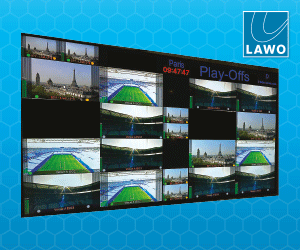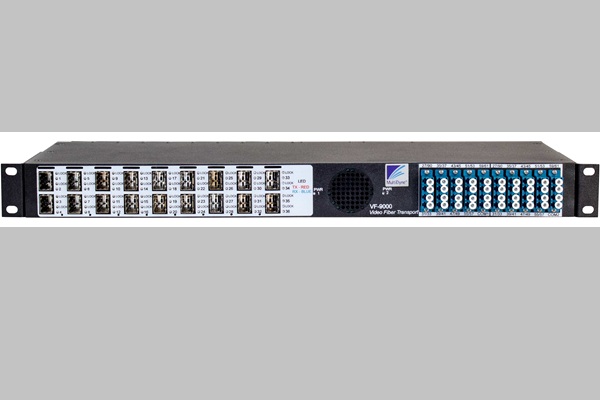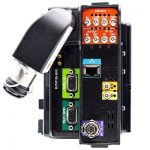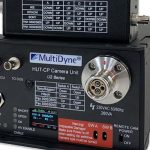These upgrades aim to deliver a more scalable and intelligent fiber transport solution for today’s increasingly complex broadcast environments.
MultiDyne has announced the latest developments in its VF-9000 Series, a modular fiber transport platform engineered to meet the high-capacity and high-pressure demands of sports, news and live event productions. Designed for deployment across dark fiber networks, the VF-9000 is available in 18- and 36-channel configurations and supports a wide array of applications, from studio interconnects to campus-wide signal transport.
Commonly used in the live sports and events and mobile production communities, the versatile VF-9000 frame tackles ultra-density signal transport, regeneration and more in a compact, single one-rack unit. The VF-9000 Series provides automatic configuration of video inputs and outputs based on recognising which VF-9000 SFP pluggable optical modules are added to the modular frame. Hot-swappable cards establish failure tolerance to ensure live mission-critical operations are minimally disrupted, while data transport, video signal regeneration and wavelength shifting add value for users seeking a high-density, rock-solid signal trunking and fiber transmission solution.
The VF-9000’s higher signal density is especially useful for customers working in ENG, sports production and other applications with high channel counts. Users can support up to 36 video signal conversions across HD, 3Gb/s and 12G from one unit. In dual-transmit mode, each front-panel optical module (SFP) immediately converts the two corresponding BNC copper connections on the back panel to video inputs. In dual-receiver mode, the corresponding BNCs automatically convert to video outputs. Transceiver SFPs are also supported for maximum operational flexibility.
Users have the freedom to mix any combination of optical and copper connections to achieve the desired balance of inputs and outputs. The VF-9000 automatically recognises the SFP module connections, and transitions to the proper configuration upon coming online. A robust multiplexer feature effortlessly combines 18 signals over one single-mode fiber for efficient, high-density signal transport.
The VF-9000 further strengthens operational versatility by enabling signal regeneration and wavelength shifting within the same frame. A GUI ensures visibility of signal health and conversion status across all inputs and outputs, as well as internal parts such as fans and power supplies. The system also differentiates itself from competitive systems by offering two hot-swappable AC power supplies to establish redundancy, eliminating the need to fiddle with external power supplies in fast-paced live production environments.
MultiDyne has continued to improve hot-swappable flexibility over several years to take further advantage of the system’s card-based architecture, adding 10G Ethernet, HDMI-to-SDI and other fiber and non-fiber conversion cards over time. The forthcoming update will include new cards to support audio, serial data and timecode with sync, further expanding its transport capabilities beyond video. These new cards, along with the forthcoming restful API, SNMP monitoring and openGear Dashboard control, will all be part of the VF-9000s next generation, enabling richer integrations, enhanced network communications, and a more layered system to support highly flexible and scalable fiber transport architectures.















































































